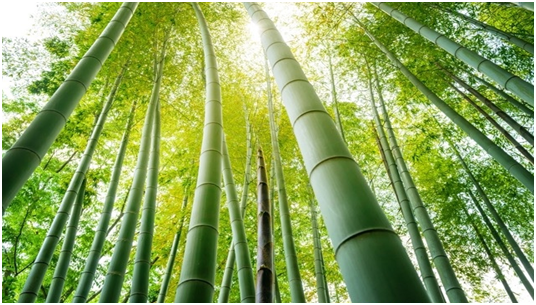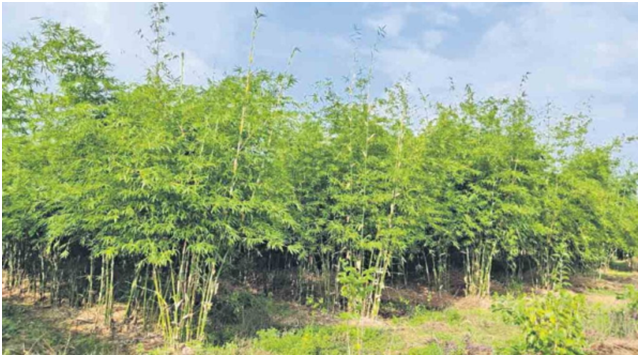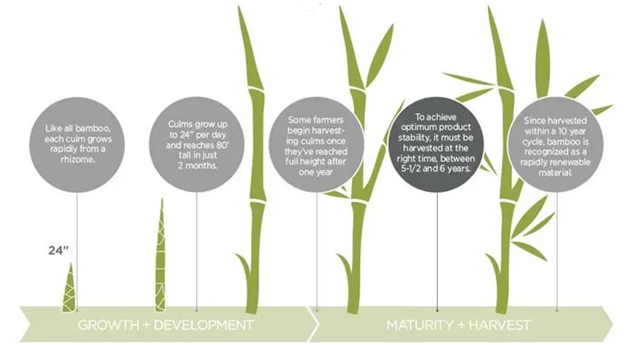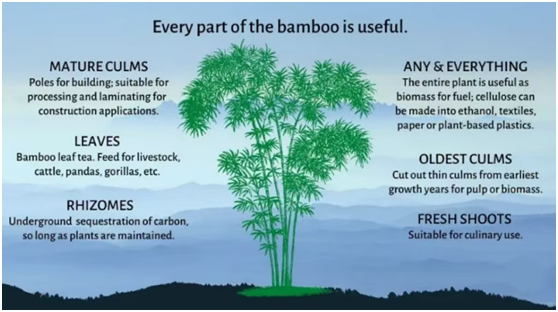Green Bamboo As A Sustainable Powerhouse
In the global quest for sustainability, one plant stands out as a versatile champion: bamboo. Often overlooked, this fast-growing grass is emerging as a cornerstone of eco-friendly innovation, offering solutions to pressing environmental and economic challenges. Its unique properties—rapid growth, minimal resource needs, and multifunctional utility—position it as a true sustainable powerhouse.

Bamboo’s environmental credentials are unparalleled. Unlike hardwood trees, which take decades to mature, many bamboo species reach full growth in just 3–5 years, with some varieties growing up to three feet per day. This rapid lifecycle makes it a highly renewable resource, capable of sequestering up to five times more carbon dioxide and producing 35% more oxygen than equivalent stands of trees. Its extensive root system also prevents soil erosion, making it vital for restoring degraded landscapes and mitigating the effects of deforestation. In regions like Southeast Asia and sub-Saharan Africa, bamboo plantations are transforming barren lands into thriving ecosystems, supporting biodiversity and stabilizing local climates.


Economically, bamboo empowers communities worldwide. It requires little to no pesticides or fertilizers, reducing production costs and making it accessible to small-scale farmers in developing nations. From handcrafted furniture and textiles to high-tech materials like strand woven bamboo, the plant fuels a multi-billion-dollar global industry. In rural areas, bamboo cultivation creates jobs in harvesting, processing, and manufacturing, lifting families out of poverty while promoting sustainable livelihoods.
Industrially, bamboo is revolutionizing sustainable manufacturing. Its fibers are stronger than many woods and comparable to steel in tensile strength, making it an ideal substitute for plastics, concrete, and even timber in construction. Bamboo-based packaging is replacing single-use plastics, decomposing naturally without releasing toxic chemicals. In the textile sector, bamboo fabric offers a soft, breathable alternative to synthetic materials, requiring less water and energy to produce. Innovators are even exploring bamboo as a feedstock for biofuels, further reducing reliance on fossil fuels.
Beyond its tangible applications, bamboo embodies a circular approach to sustainability. Every part of the plant is usable: culms for building, leaves for animal feed, and shoots for nutritious food. When harvested responsibly, bamboo regenerates without replanting, ensuring a continuous supply without depleting resources. This closed-loop system aligns with global efforts to achieve net-zero emissions and transition to a circular economy.

As the world grapples with climate change and resource scarcity, bamboo stands as a symbol of resilience and innovation. It proves that sustainability and productivity can go hand in hand, offering a blueprint for harmonious coexistence with nature. By embracing bamboo’s potential, we unlock a powerful tool to build greener industries, strengthen communities, and safeguard our planet for future generations. Truly, bamboo is more than a plant—it is a sustainable powerhouse shaping a better world. Future needs bamboo, make it happen.
